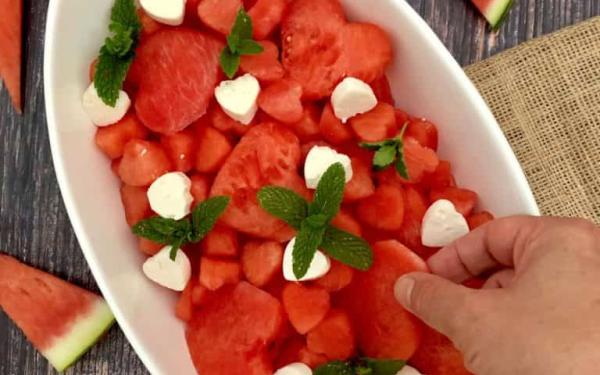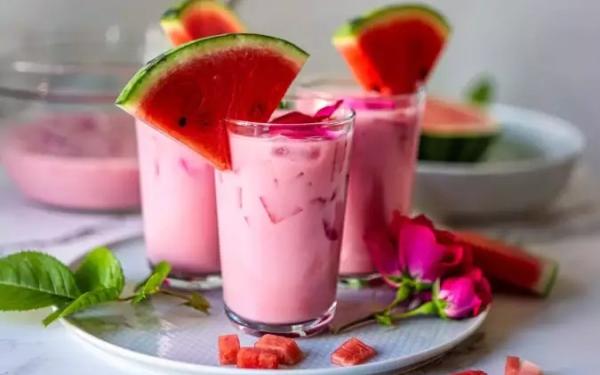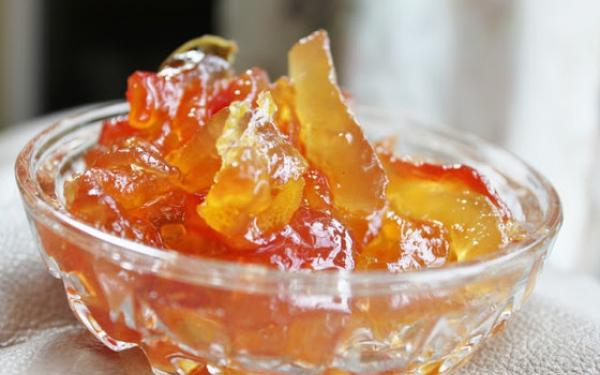Watermelon (Citrullus lanatus), a flowering plant species of the Cucurbitaceae, is a fruit that is grown worldwide. Evidence points towards the watermelon as having originated in northeast Africa, domesticated over 4,000 years ago. It appeared in the Mediterranean region some 2,000 years ago[1].
Watermelon thrives in well-drained soil accompanied by a sunny environment, perfect for the Middle East. It will typically take anywhere from two to three months of heat to bring about the watermelon fruit. Although the plant grows best with direct sunlight, watermelon is still able to thrive with partial sun to a certain extent[2].

Growing Instructions for Watermelon
CULTURE: Watermelon likes a well-drained soil with a pH of 6.5–7.5 and good moisture-holding capability, and requires full sun, preferably with a southern exposure.
Transplant (recommended) — sow indoors in 2–3” pots or cell-type containers 3–4 weeks before transplanting outdoors after last frost date. Plant 2 seeds/pot or cell, 1/2–1” deep. Keep temperature above 75°F/24°C. Ensure adequate fertility in the starting mix, and never let the mix dry out. After frost, when soil is at least 65°F/18°C, transplant 2–3’ apart in rows 6-8’ apart. Handle plants with extreme care to avoid disturbing roots.
Direct seed — Sow after last frost date when soil is warm, 70°F/21°C, 3 seeds every 18–26”, 1/2–1” deep, thinning to 1-2’ apart in rows of 6–8’ apart.
Mulch & Row Covers: Use of infrared transmitting poly mulching and row covers hastens early growth in cool regions.
HARVEST: When the tendril on the vine nearest the fruit stem is dead; when the spot where the fruit rests on the ground is yellow; or when flicking the melon with your finger results in a “plunk” sound. Store refrigerated.
DISEASES AND PESTS: Prevent disease with crop rotation, good sanitation, and use of resistant varieties. Control cucumber beetles with fabric row covers and botanical insecticides.
Cultural Relevance of Watermelon
Watermelons were a common treat in the ancient Middle East according to various archaeological discoveries. Watermelon seeds have been found in 5,000 year old ruins in Libya, and are a frequent motif on Ancient Egyptian tombs (including King Tut’s). Watermelon was also a popular offering in Egyptian rituals used to strengthen the deceased on their way to the afterlife[4]. Many of these motifs depict the modern, cultivated version of the fruit, meaning cultivation must have occurred in the region prior to this time. Watermelon is also mentioned in the Hebrew Bible (Numbers 11:5) as one of the favorite desserts of the ancient Israelites[5].
Watermelon is composted of 91% water and 6% sugars, making it both refreshing and sweet. Originally cultivated as a source of both water and food, watermelon is most frequently served sliced and uncooked. However, there are a variety of Middle Eastern recipes that pair Watermelon with other ingredients to create refreshing salads or sweet, fruity drinks. Watermelon seeds can also be dried and roasted for their nutty flavor, or ground into flour. Watermelon rinds can also be eaten, but are generally unappealing unless pickled and added to stir-fries or stews[3].



